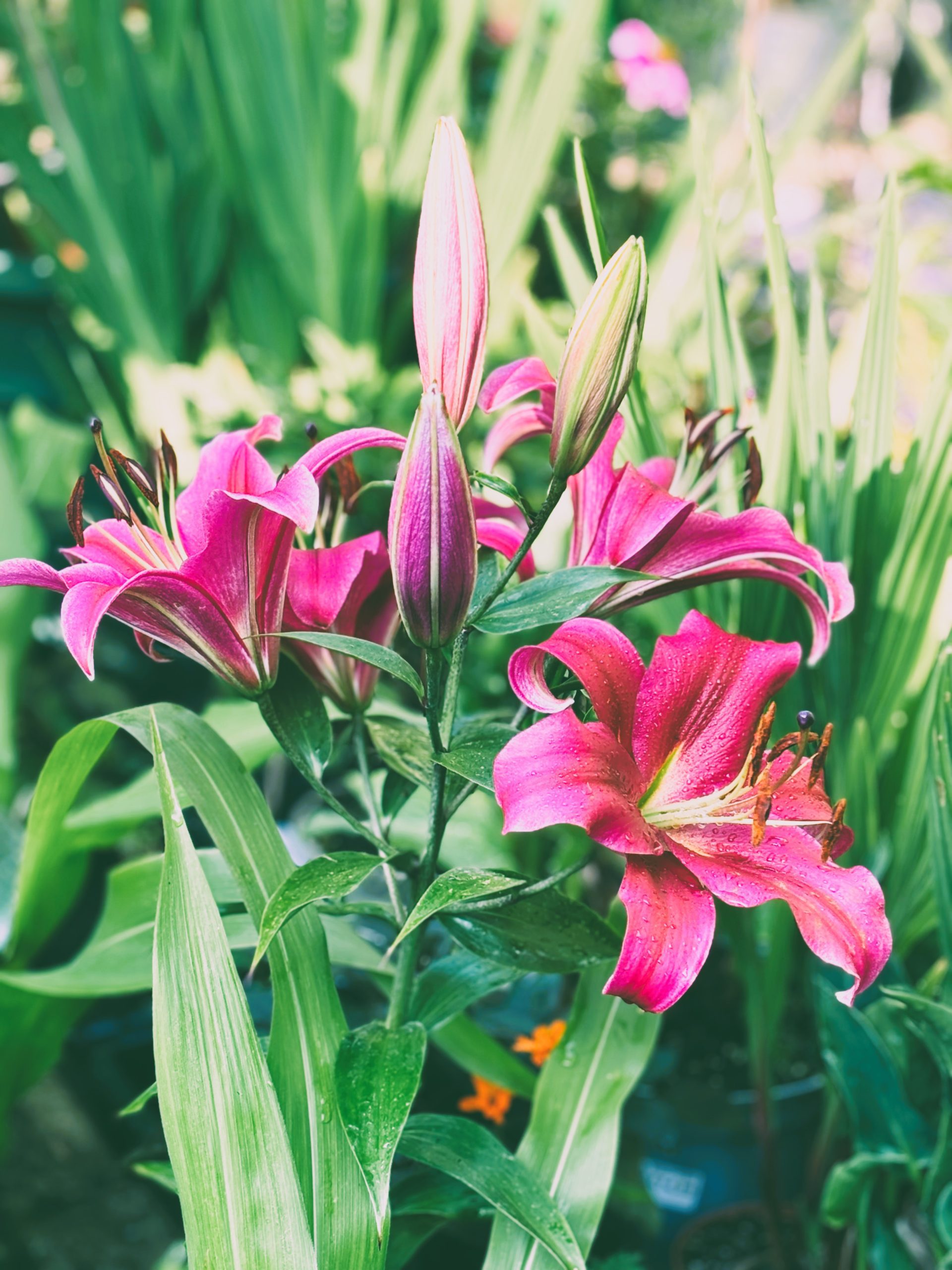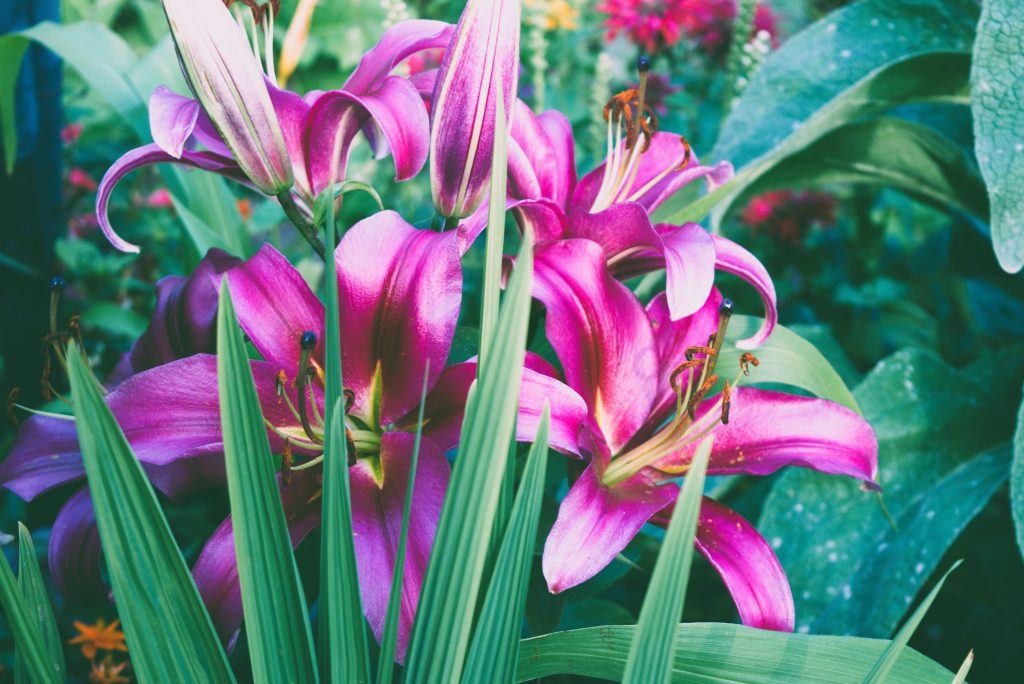Tower lilies, also known as giant lilies, are a stunning addition to any garden, renowned for their impressive height and breathtaking blooms. These horticultural marvels, belonging to the genus Lilium, have captivated gardeners and flower enthusiasts worldwide with their striking appearance and robust growth. In this article, we delve into the characteristics, cultivation, care, and history of tower lilies, offering insights into why they are a must-have for any floral enthusiast.
Characteristics of Tower Lilies
Tower lilies, often referred to as “tree lilies” due to their towering stature, are hybrid lilies bred to achieve greater height and hardiness. These perennials can reach heights of 6 to 10 feet (1.8 to 3 meters) under optimal conditions, making them a dramatic focal point in garden landscapes. The flowers are typically large, trumpet-shaped, and come in a variety of colors, including whites, pinks, yellows, and purples. Many varieties also boast a delightful fragrance that can fill the garden with a sweet, alluring scent.
History of Tower Lilies
The development of tower lilies is a relatively recent advancement in horticulture. They are the result of hybridization efforts aimed at combining the best traits of different lily species to create plants that are both tall and hardy. Breeders sought to enhance the visual impact of lilies in the garden while also ensuring that these plants could withstand various environmental stresses. The success of these efforts has led to the popularity of tower lilies among gardeners looking for dramatic and reliable blooms.
Cultivation of Tower Lilies
Tower lilies thrive in well-drained soil and prefer a sunny location, although they can tolerate partial shade. Choosing a site with good air circulation can help prevent diseases. The soil should be rich in organic matter. Amending the planting area with compost or well-rotted manure can enhance soil fertility and drainage. Plant the bulbs about 6 to 8 inches (15 to 20 cm) deep and space them approximately 12 inches (30 cm) apart. This depth protects the bulbs from frost and provides stability for the tall stems.
While establishing, tower lilies need regular watering to keep the soil moist but not waterlogged. Once established, they are relatively drought-tolerant but will benefit from consistent watering during dry periods. Applying a layer of mulch around the base of the plants helps retain soil moisture, regulate temperature, and suppress weeds.

Best Varieties of Tower Lilies
1. Lilium ‘Honeymoon’
Description: This variety features large, creamy-yellow blooms with a subtle fragrance. The petals often have a slightly ruffled appearance, adding to its charm.
Height: Up to 8 feet
Bloom Time: Mid to late summer
Special Features: Known for its vigorous growth and reliability, making it a favorite among gardeners.
2. Lilium ‘Pretty Woman’
Description: ‘Pretty Woman’ offers pristine white, trumpet-shaped flowers that are highly fragrant. The flowers can reach up to 10 inches in diameter.
Height: Up to 8 feet
Bloom Time: Mid to late summer
Special Features: This variety is particularly striking in evening gardens, where its white blooms can almost appear to glow.
3. Lilium ‘Purple Prince’
Description: With deep burgundy-purple flowers that have a velvety texture, ‘Purple Prince’ is a showstopper. The blooms are large and slightly downward-facing.
Height: Up to 8 feet
Bloom Time: Mid to late summer
Special Features: The rich, dark color of this variety adds depth and contrast to garden compositions.
4. Lilium ‘Robina’
Description: ‘Robina’ boasts vibrant, fuchsia-pink flowers with a sweet fragrance. The blooms are large, often with a slight hint of white at the petal edges.
Height: Up to 7 feet
Bloom Time: Mid to late summer
Special Features: This variety is known for its sturdy stems, which can support its large, heavy flowers without staking.
5. Lilium ‘Conca d’Or’
Description: Featuring soft, lemon-yellow flowers with white edges, ‘Conca d’Or’ is both elegant and eye-catching. The flowers are slightly recurved and highly fragrant.
Height: Up to 6 feet
Bloom Time: Mid to late summer
Special Features: This variety is noted for its exceptional longevity and disease resistance.
6. Lilium ‘Debbie’
Description: ‘Debbie’ offers large, fragrant blooms in a stunning shade of deep pink with a hint of red. The petals are slightly ruffled, adding to its visual appeal.
Height: Up to 7 feet
Bloom Time: Mid to late summer
Special Features: The intense color of ‘Debbie’ makes it a standout in any garden.
7. Lilium ‘Scheherazade’
Description: This variety is known for its exotic, Turk’s cap-shaped flowers in a rich, deep red with gold edges and spots. The blooms are downward-facing and highly fragrant.
Height: Up to 8 feet
Bloom Time: Mid to late summer
Special Features: ‘Scheherazade’ adds an exotic touch to the garden with its unique flower shape and coloration.
Growing Tips for Tower Lilies
To ensure the best growth and flowering of these stunning varieties, consider the following tips:
- Planting Location: Choose a sunny spot with well-drained soil. Tower lilies can tolerate partial shade but prefer full sun for optimal blooming.
- Soil Preparation: Enrich the soil with organic matter, such as compost or well-rotted manure, to provide nutrients and improve drainage.
- Watering: Keep the soil consistently moist but not waterlogged, especially during the growing season. Once established, tower lilies are relatively drought-tolerant.
- Staking: Due to their height, some varieties may require staking to prevent them from toppling over, especially in windy conditions.
- Mulching: Apply a layer of mulch around the base of the plants to retain moisture, regulate soil temperature, and suppress weeds.
- Fertilization: Feed tower lilies with a balanced, slow-release fertilizer in early spring as growth begins and again after flowering to support next year’s blooms.
Given their height, tower lilies may require staking to prevent the stems from toppling over, especially in windy conditions. Garden stakes or bamboo canes work well for this purpose. Feed tower lilies with a balanced, slow-release fertilizer in early spring as growth begins. A second feeding after flowering can help replenish nutrients and support next year’s growth.
Remove spent flowers to direct energy back into the bulb for future blooms. Allow the foliage to die back naturally, as it continues to photosynthesize and strengthen the bulb for the next season. Tower lilies are relatively resistant to pests and diseases but can occasionally be affected by lily beetles, aphids, or fungal issues like botrytis. Regular inspection and prompt treatment with appropriate organic or chemical controls can mitigate these problems. In colder climates, applying a thick layer of mulch or straw over the planting area can protect the bulbs from freezing temperatures. Alternatively, bulbs can be lifted and stored indoors during the winter months.
Why Choose Tower Lilies?
The sheer height and size of tower lilies make them an eye-catching feature in any garden. Their vibrant blooms and pleasant fragrance add a touch of elegance and grandeur. Tower lilies are suitable for various garden styles, from formal borders to naturalistic plantings. They also make excellent cut flowers, bringing their beauty indoors. With proper care, tower lilies can thrive and bloom for many years, providing long-term enjoyment and enhancing the garden’s overall appeal.
Conclusion
Tower lilies are more than just plants; they are living sculptures that can transform any garden into a spectacular haven of color and fragrance. With their towering height and magnificent blooms, they offer both visual impact and a delightful sensory experience. By understanding their cultivation and care requirements, gardeners can successfully grow these majestic giants and enjoy their splendor for years to come. Whether you are a seasoned gardener or a novice, adding tower lilies to your garden is sure to elevate its beauty and charm.

